Related Research Articles
Management is the administration of organizations, whether they are a business, a nonprofit organization, or a government body through business administration, nonprofit management, or the political science sub-field of public administration respectively. It is the science of managing the resources of businesses, governments, and other organizations.
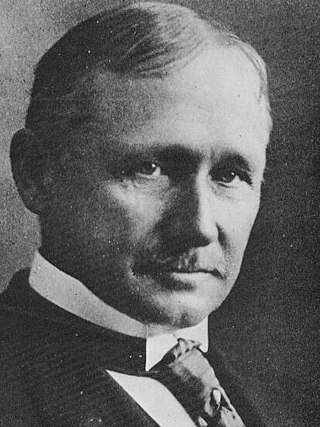
Frederick Winslow Taylor was an American mechanical engineer. He was widely known for his methods to improve industrial efficiency. He was one of the first management consultants. In 1909, Taylor summed up his efficiency techniques in his book The Principles of Scientific Management which, in 2001, Fellows of the Academy of Management voted the most influential management book of the twentieth century. His pioneering work in applying engineering principles to the work done on the factory floor was instrumental in the creation and development of the branch of engineering that is now known as industrial engineering. Taylor made his name, and was most proud of his work, in scientific management; however, he made his fortune patenting steel-process improvements. As a result, scientific management is sometimes referred to as Taylorism.

Organizational theory refers to a series of interrelated concepts that involve the sociological study of the structures and operations of formal social organizations. Organizational theory also seeks to explain how interrelated units of organization either connect or do not connect with each other. Organizational theory also concerns understanding how groups of individuals behave, which may differ from the behavior of an individual. The behavior organizational theory often focuses on is goal-directed. Organizational theory covers both intra-organizational and inter-organizational fields of study.

Public Administration or Public Policy and Administration is the implementation of public policy, administration of government establishment, and management of non-profit establishment. It is also a subfield of political science taught in public policy schools that studies this implementation and prepares people, especially civil servants, in administrative positions for working in the public sector, voluntary sector, some industries in the private sector dealing with government relations, regulatory affairs, legislative assistance, corporate social responsibility (CSR), environmental, social, governance (ESG), public procurement (PP), public-private partnerships (P3), and business-to-government marketing/sales (B2G), as well as those working at think tanks, non-profit organizations, consulting firms, trade associations, or in other positions that uses similar skills found in public administration.
Departmentalization refers to the process of grouping activities into departments. Division of labour creates specialists who need coordination. This coordination is facilitated by grouping specialists together in departments.
Span of control, also called span of management, is a term used in business management, particularly human resource management. The term refers to the number of subordinates or direct reports a supervisor is responsible for.
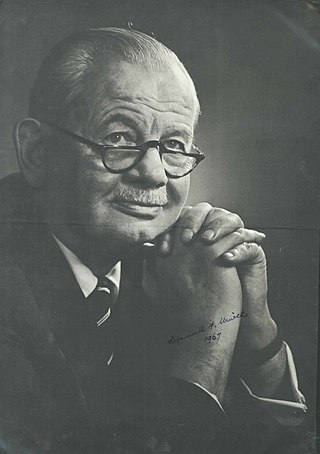
Lyndall Fownes Urwick was a British management consultant and business thinker. He is recognised for integrating the ideas of earlier theorists like Henri Fayol into a comprehensive theory of management administration. He wrote an influential book called The Elements of Business Administration, published in 1943. With Luther Gulick, he founded the academic journal Administrative Science Quarterly.
Oliver Sheldon (1894–1951) was a director of the Rowntree's in York, England. He wrote on principles of public and business administration in the 1920s.
Organizing or organising is the establishment of effective authority-relationships among selected works, persons and workplaces in order for a group to work together efficiently, or the process of dividing work into sections and departments, which often improves efficiency.
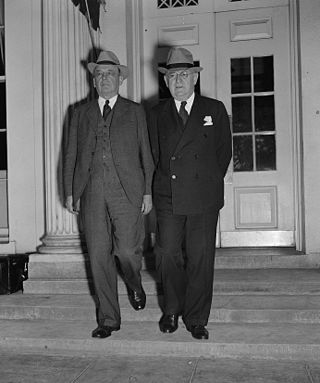
The President's Committee on Administrative Management, commonly known as the Brownlow Committee or Brownlow Commission, was a presidentially-commissioned panel of political science and public administration experts that in 1937 recommended sweeping changes to the executive branch of the United States government. The committee had three members: Louis Brownlow, Charles Merriam, and Luther Gulick. The staff work was managed by Joseph P. Harris, director of research for the committee.
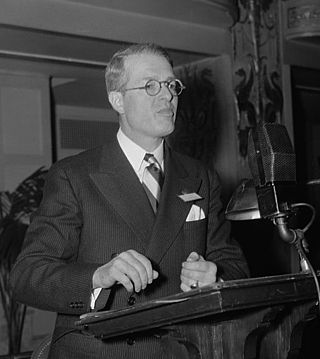
Luther Halsey Gulick (1892–1993) was an American political scientist, Eaton Professor of Municipal Science and Administration at Columbia University, and Director of its Institute of Public Administration, known as an expert on public administration.
Edward Francis Leopold Brech was a British management consultant, and author of management theory and practice books, known for his work on the history of management.

Louis Brownlow was an American author, political scientist, and consultant in the area of public administration. As chairman of the Committee on Administrative Management in 1937, he co-authored a report which led to passage of the Reorganization Act of 1939 and the creation of the Executive Office of the President. While chairing the Committee on Administrative Management, Brownlow called several of President Franklin D. Roosevelt's advisors men with "a passion for anonymity"—which later became a popular phrase.
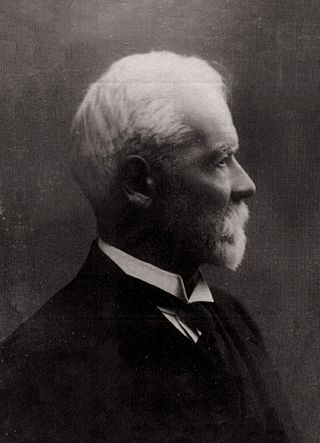
Henri Fayol was a French mining engineer, mining executive, author and director of mines who developed a general theory of business administration that is often called Fayolism. He and his colleagues developed this theory independently of scientific management but roughly contemporaneously. Like his contemporary Frederick Winslow Taylor, he is widely acknowledged as a founder of modern management methods.
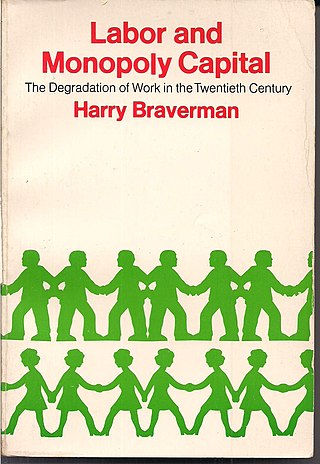
Labor and Monopoly Capital: The Degradation of Work in the Twentieth Century is a book about the economics and sociology of work under monopoly capitalism by the political economist Harry Braverman. Building on Monopoly Capital by Paul A. Baran and Paul Sweezy, it was first published in 1974 by Monthly Review Press.

Fayolism was a theory of management that analyzed and synthesized the role of management in organizations, developed around 1900 by the French manager and management theorist Henri Fayol (1841–1925). It was through Fayol's work as a philosopher of administration that he contributed most widely to the theory and practice of organizational management.
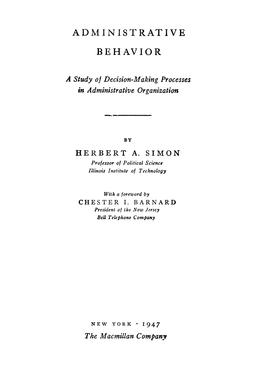
Administrative Behavior: a Study of Decision-Making Processes in Administrative Organization is a book written by Herbert A. Simon (1916–2001). It asserts that "decision-making is the heart of administration, and that the vocabulary of administrative theory must be derived from the logic and psychology of human choice", and it attempts to describe administrative organizations "in a way that will provide the basis for scientific analysis". The first edition was published in 1947; the second, in 1957; the third, in 1976; and the fourth, in 1997. As summarized in a 2001 obituary of Simon, the book "reject[ed] the notion of an omniscient 'economic man' capable of making decisions that bring the greatest benefit possible and substitut[ed] instead the idea of 'administrative man' who 'satisfices—looks for a course of action that is satisfactory'". Administrative Behavior laid the foundation for the economic movement known as the Carnegie School.
Henry Clayton Metcalf was an early American organizational theorist, Professor of Political Science at Tufts College in Massachusetts, and Chairman of Tufts College. He is best known from his publications on management with Ordway Tead and Lyndall Urwick.
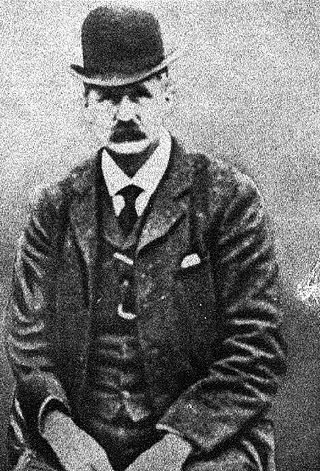
Joseph Slater Lewis MICE FRSE was a British engineer, inventor, business manager, and early author on management and accounting, known for his pioneering work on cost accounting.

Clarence Hunter Northcott (1880–1968) was an Australian sociologist and manager at the Rowntree's Works at York. He was influential in the development of the Chartered Institute of Personnel and Development.
References
- Chalekian, P (2016). "Instantiations of POSDCORB: A Framework–Theory–Model Approach". Administration & Society. 48 (3): 316–343. doi:10.1177/0095399713481599. S2CID 144708201.
- Fayol, H. (1949). General and Industrial Management. (C. Storrs, Trans.). London: Sir Isaac Pitman & Sons, LTD. (Original work published 1918)
- Fitch, L. (1996). Making Democracy Work. Berkeley: Institute of Governmental Studies Press.
- Gulick, L. H. (1937). Notes on the Theory of Organization. In L. Gulick & L. Urwick (Eds.), Papers on the Science of Administration (pp. 3–45). New York: Institute of Public Administration.
- Henry, N (1975). "Paradigms of Public Administration". Public Administration Review. 35 (4): 376–386. doi:10.2307/974540. JSTOR 974540.
- Martin, D. W. (1987). "Deja Vu: French Antecedents of American Public Administration". Public Administration Review. 47 (4): 297–303. doi:10.2307/975309. JSTOR 975309.
- Newbold, Stephanie; Terry, Larry (2006). "The President's Committee on Administrative Management: The Untold Story and the Federalist Connection". Administration & Society. 38 (5): 522–555. doi:10.1177/009539970603800503. S2CID 144821334.
- Pindur, W.; Rogers, S. E.; and Kim, P. S. (1995). The history of management: a global perspective. 'Journal of Management History, 1 (1), pp. 59–77.
- Shafritz, Jay and Ott, J. Steven. 2001. Classical Organization Theory. In J. Shafritz & J. Ott (Eds.), Classics of Organization Theory (pp. 27–34). Orlando: Harcourt.
- Simon, H. A. (1946). "Proverbs of Administration". Public Administration Review. 6 (1): 53–67. doi:10.2307/973030. JSTOR 973030.
- Urwick, L. (1933). Organization as a Technical Problem. L. Gulick & L. Urwick (Eds.), Papers on the Science of Administration (pp. 49–88). New York: Institute of Public Administration.
- Urwick, L. (1956). The Manager's Span of Control. The Harvard Business Review. May–June, 1956, pp. 39–47.